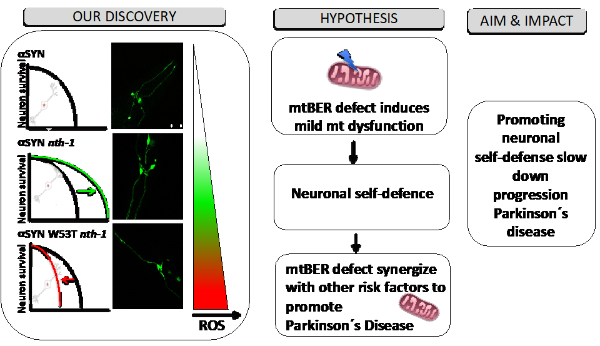Aging and mitochondrial dysfunction are two fundamental processes that contribute to Parkinson´s disease (PD). Although there is growing evidence that DNA damage and repair sit at the intersection of these processes, the mechanisms are largely unknown.
In this project we will use computational modelling supported by genetic and multi-omics data to understand how genomic instability in defined cell populations can drive aging and neurodegeneration.
We have developed animal models in which we can follow how DNA repair influences neuronal health over a natural life-course and identified a self-defense mechanism that is induced in animals that cannot repair DNA damage via the Base Excision Repair (BER) pathway. In C. elegans models of Parkinson´s disease (PD), where human a-synuclein is expressed in dopaminergic neurons, we found that loss of BER induces mild mitochondrial dysfunction and that this protects dopaminergic neurons from spontaneous degeneration upon aging. In animals that express mutant a -synuclein, however, loss of BER renders the neurons hypersensitive. Thus, BER might modulate the susceptibility to PD.
The overarching goal of the present proposal is to understand the dynamic regulation of these neuronal self-defence mechanisms in time and space and, thereby, develop strategies to harness these to promote healthy aging.
Requirements
- MSc in bioscience, computational science, or physics.
- Experience with scientific programming is considered an advantage.
Supervisors
Call 1: Project start autumn 2021
This project is in call 1, starting autumn 2021. Read about how to apply
